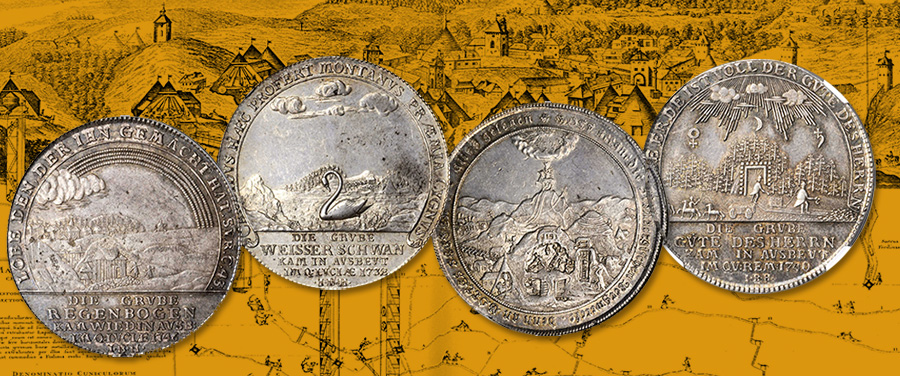
Mining Talers from the Linda Collection
A Feature Collection in the Stack’s Bowers Galleries ANA Auction
Ever an iconic denomination and focal point of countless coin collections, the taler—a large-sized and weighty silver piece—has been the basis for much of the world’s economy since the late 15th century. At that time, Sigismund, the Archduke of Austria and a member of the Habsburg family, enacted a new and fairly radical monetary policy whereby large format silver coinage would be reintroduced, as much of Europe had relied upon thin, low-grade, and rather uninspiring denominations for nearly a millennium. Advancements in minting and mining technology allowed Sigismund, nicknamed "der Münzreiche" (rich in coin), to achieve this new policy, with his "guldiner" (first struck in 1486, measuring roughly 40-42 mm in diameter and weighing approximately 32 gms) becoming the standard-bearer in European monetary policies. In just under 30 years, a slight adjustment was made to the guldiner’s weight so that it could comport with the much more popular standard of Köln (Cologne) rather than that of Sigismund’s Tyrol. The weight was reduced to just over 29 gms. As this coin was first struck at the Joachimsthal mint (now Jáchymov in the Czech Republic), it became known as the joachimsthaler, or thaler for short. This derived to the names of countless similarly-sized silver strikings in later years, including the American dollar.
The size of these "talers" wasn’t just economically important, however. It was also vital to growth in the artistic expression of the engravers. The broad planchets of these large coins acted as a "medallic canvas" on which a large degree of imagery could be created. One of the areas in which this intricate artistry can be observed is in the subset known as "mining talers," which celebrated various precious metal mines. Silver was especially celebrated for its role in the minting of talers and minors, but other metals were mined as well, such as the remaining six ‘metals of antiquity’: gold, iron, mercury, tin, copper, and lead. One of the ways in which these metals were subtly referenced on such talers was through various celestial symbols then-associated with the metals. Gold and silver, rather appropriately, were associated with the sun and the moon, while the remainder of the metals were associated with Mars, Mercury, Jupiter, Venus, and Saturn, respectively.
Focusing on the Linda Collection, this week’s ANA feature collection, one will find, if one looks closely enough, some of these symbols hidden in the design. A 1756 taler from Brunswick-Luneburg-Calenberg-Hannover honors the "Goodness of the Lord" mine, and features a mine opening in the middle of an otherwise wooded landscape. While miners are at work in the foreground, the allusion to the minerals extracted cannot be missed. The astrological symbols for Venus, the moon, and Saturn are clear, and once one realizes the engraver’s intention, it is obvious that this mine produced copper, silver, and lead. Even more impressive was the conveyed output of the mine celebrated on a 1700 taler from Stolberg-Stolberg, which portrays an extremely busy mining operation on a hillside, the Stolberg stag preening at the summit. What can easily be lost, however, are the seven astrological symbols emanating from God’s light. These are the full complement of recognized metals, indicating the mine’s potential. Two other mining talers in this collection, a pair of 1752 issues from Brunswick-Wolfenbuttel, focus more upon eponymous iconography. On one, an idyllic swan in the foreground of a mine honors what was known as the ‘White Swan’ mine. On the other, a far-reaching rainbow radiates above another mine known as, quite conveniently, the "Rainbow" mine.
In addition to these highly artistic and iconographic mining talers, the Linda Collection will offer a large variety of issues that pair skilled craftsmanship with exceptional quality, providing bidders with two centuries of attractive and choice examples, drawing primarily from the seemingly endless fiefdoms of the Holy Roman Empire. We hope that you enjoy this stunning array of issues and that you are able to discover intricate details on these awesome medallic canvases.
Be sure to visit StacksBowers.com for more information regarding the August ANA World’s Fair of Money Auction in Rosemont, Illinois and to view lots and bid when the entire sale is posted online. If you are interested in consigning your coins and paper money to one of our upcoming auctions, please contact us at 800-458-4646 or by email at [email protected].





